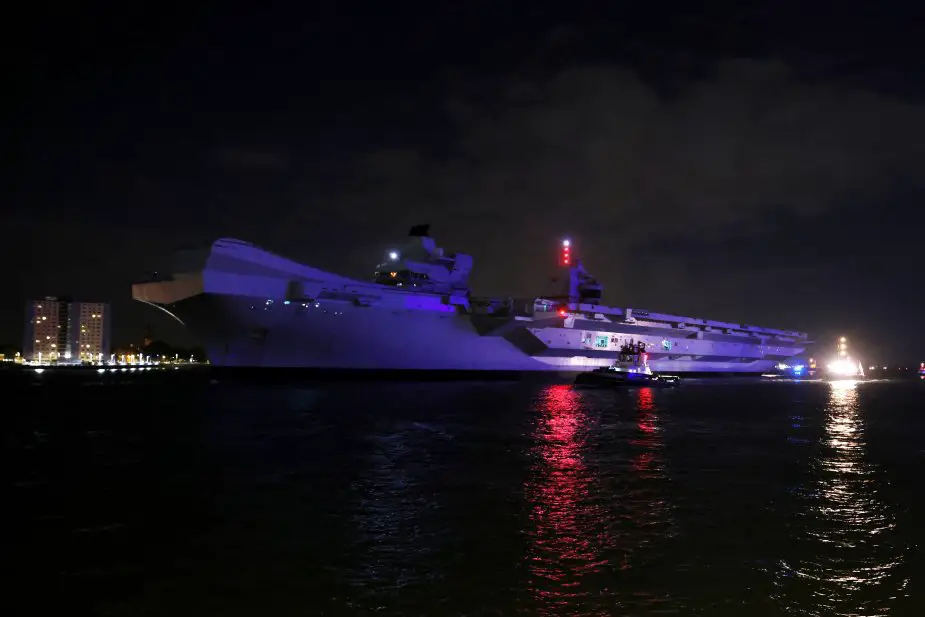Breaking news
UK: Royal Navy's aircraft carrier HMS Prince of Wales not ready before spring 2023.
According to information published by the BBC on January 2, 2023, the Queen Elizabeth aircraft carrier HMS Prince of Wales will not be ready before spring 2023.
Follow Navy Recognition on Google News at this link
 Queen Elizabeth class aircraft carrier HMS Prince of Wales. (Picture source: UK MoD)
Queen Elizabeth class aircraft carrier HMS Prince of Wales. (Picture source: UK MoD)
HMS Prince of Wales (R09) is the second Queen Elizabeth-class aircraft carrier of the Royal Navy. The completed Prince of Wales began sea trials in September 2019 and first arrived at her new home base of HMNB Portsmouth in November 2019. The ship was formally commissioned into the Royal Navy at a ceremony in Portsmouth on 10 December 2019.
Much like her sister ship Queen Elizabeth, the original 2008 design of Prince of Wales envisaged flying F-35B Lightning II Short Take-Off and Vertical Landing (STOVL) jets from a ski-jump ramp.
However, in May 2010, the government published its long-awaited Strategic Defence and Security Review (SDSR), which stated that Prince of Wales would be converted to a Catapult Assisted Take-Off But Arrested Recovery (CATOBAR) configuration, operating the F-35C.
An 18-month study commenced into the conversion but ultimately found that it would cause severe cost implications and delays. In May 2012, the government announced it would be reversing its decision to convert Prince of Wales and that the ship would be built to its original STOVL design.
On 27 August 2022, Prince of Wales departed HMNB Portsmouth to undertake training exercises with the US Navy, the Royal Canadian Navy, and United States Marine Corps, and to host the Atlantic Future Forum trade and economic conference in New York.
On 29 August, after suffering mechanical problems in the UK's South Coast Exercise area the ship proceeded to anchor off the Isle of Wight. It was reported that an external coupling that connects the outer propeller shaft to the drive shaft from the propulsion motors had failed.
The ships' company is 679, rising to 1,600 when the air crew is added. In April 2015 a parliamentary reply stated that the average crew size would be 672.
The ships have a displacement of 65,000 tonnes on delivery, but the design allows for this to reach over 70,000 tonnes as the ships are upgraded through their lifetime.
They have an overall length of 280 metres (920 ft), a width at deck level of 70 metres (230 ft), a height of 56 metres (184 ft), a draught of 11 metres (36 ft), and a range of 10,000 nautical miles (12,000 mi; 19,000 km).
Nuclear propulsion was rejected due to its high cost and manpower required in favour of Integrated Electric Propulsion consisting of two Rolls-Royce Marine Trent MT30 36 MW (48,000 hp) gas turbine generator units and four Wärtsilä diesel generator sets (two 9 MW or 12,000 hp and two 11 MW or 15,000 hp).




























